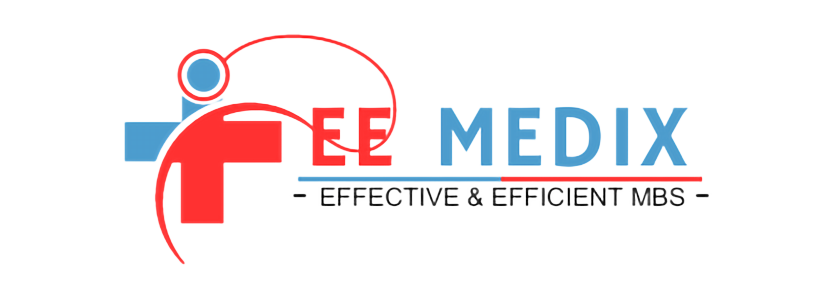In the ever-evolving landscape of healthcare, medical billing plays a pivotal role in ensuring that healthcare providers receive appropriate compensation for their services. However, the complexities of medical billing, coupled with frequent changes in regulations, can make it a daunting task for healthcare organizations to navigate. This is where a medical billing audit becomes indispensable. In this comprehensive guide, we delve into the intricacies of medical billing audits, their significance, and how they can positively impact healthcare practices.
Understanding the Medical Billing Audit
What is a Medical Billing Audit?
A medical billing audit is a systematic review and evaluation of a healthcare provider’s billing and coding processes. It involves a thorough examination of medical claims, patient records, and financial transactions to ensure accuracy, compliance with regulatory guidelines, and optimization of revenue. This process is crucial to identify and rectify errors, discrepancies, and potential compliance issues that may lead to financial losses and legal repercussions.
The Significance of Medical Billing Audits
- Maximizing Revenue: Medical billing audits can uncover missed opportunities for revenue generation. By identifying undercoding or missed charges, healthcare providers can significantly boost their income.
- Ensuring Compliance: In the healthcare industry, compliance with regulations such as the Health Insurance Portability and Accountability Act (HIPAA) and the Affordable Care Act (ACA) is non-negotiable. Audits help healthcare organizations adhere to these regulations, reducing the risk of penalties.
- Reducing Billing Errors: Errors in medical billing can lead to claim denials and delayed payments. A thorough audit can pinpoint these errors and help providers rectify them promptly.
- Enhancing Operational Efficiency: By streamlining billing and coding processes, audits can improve the overall efficiency of a healthcare practice. This leads to quicker reimbursements and better patient satisfaction.
Types of Medical Billing Audits
Prospective Audits
Prospective audits involve reviewing medical claims before they are submitted to insurance companies. This proactive approach helps prevent billing errors and ensures that claims are accurate and compliant from the outset.
Retrospective Audits
Retrospective audits, on the other hand, occur after claims have been submitted and processed. These audits identify errors and discrepancies in previously submitted claims and work to correct them for future submissions.
Concurrent Audits
Concurrent audits are conducted in real-time as healthcare services are provided. They aim to ensure that billing and coding are accurate as services are delivered, reducing the likelihood of errors.
External Audits
External audits are performed by third-party organizations or government agencies. They are often initiated as part of investigations into potential fraud or non-compliance with regulations.
The Medical Billing Audit Process
A successful medical billing audit involves a series of well-defined steps:
1. Data Collection
The audit process begins with the collection of relevant data, including patient records, claims, and billing codes. This data serves as the foundation for the audit.
2. Analysis and Review
Experienced auditors meticulously review the collected data, looking for discrepancies, errors, and potential compliance issues. Advanced software tools are often employed to aid in this analysis.
3. Identifying Errors
During the analysis, auditors identify errors such as overcoding, undercoding, unbundling, and non-covered services. These errors can lead to claim denials or legal complications if not rectified.
4. Compliance Check
Auditors ensure that the billing and coding practices align with the latest regulatory requirements, including those related to ICD-10 coding and HIPAA.
5. Report Generation
This report includes recommendations for corrective actions to address identified issues.
6. Corrective Actions
Healthcare organizations implement the recommended corrective actions to rectify errors and improve their billing and coding processes.
7. Ongoing Monitoring
To maintain compliance and accuracy, healthcare providers often implement ongoing monitoring processes to prevent future errors.
Benefits of a Thorough Medical Billing Audit
A well-executed medical billing audit offers numerous benefits to healthcare providers:
Enhanced Financial Performance
By optimizing revenue through accurate coding and billing, healthcare organizations can achieve financial stability and growth.
Legal Protection
Compliance with healthcare regulations protects providers from legal liabilities and potential fines.
Improved Patient Satisfaction
Efficient billing processes result in quicker reimbursement, leading to improved patient satisfaction.
Peace of Mind
Knowing that billing processes are accurate and compliant provides peace of mind to healthcare providers and their patients.
Choosing the Right Partner for Your Medical Billing Audit
Selecting a reputable partner to conduct your medical billing audit is critical. Look for the following qualities:
- Experience: Ensure that the auditing firm has extensive experience in healthcare billing and compliance.
- Expertise: Auditors should possess in-depth knowledge of medical coding, regulations, and industry best practices.
- Technology: Check if the auditing firm employs advanced technology and software tools for accurate analysis.
- References: Request references and case studies from previous clients to gauge the firm’s track record.
In Conclusion
A medical billing audit is an invaluable tool for healthcare providers seeking to optimize revenue, ensure compliance, and streamline their operations. By partnering with the right auditing firm and conducting regular audits, healthcare practices can thrive in a competitive industry while delivering quality care to their patients.

